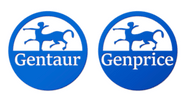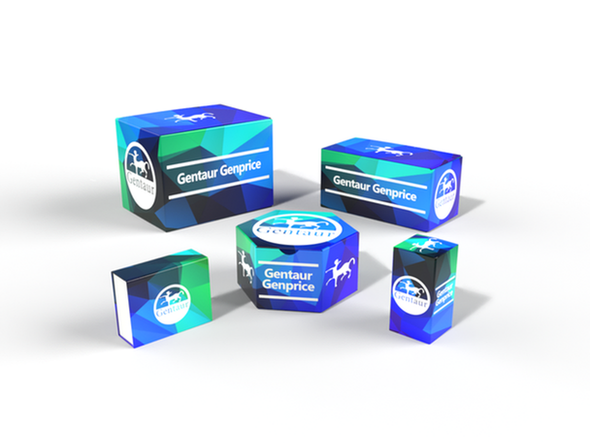Description
Histone H1 Antibody [SPM256] | 33-386 | Gentaur UK, US & Europe Distribution
Host: Mouse
Reactivity: Human, Mouse, Rat
Homology: N/A
Immunogen: Nuclei of human leukemia biopsy cells were used as the immunogen for the anti-Histone H1 antibody.
Research Area: Cancer
Tested Application: Flow, IF, IHC-P
Application: Flow Cytometry: 0.5-1 ug/million cells in 0.1ml
Immunofluorescence: 0.5-1 ug/ml
Immunohistochemistry (FFPE) : 0.5-1 ug/ml for 30 min at RT (1)
Prediluted format : incubate for 30 min at RT (2)
Optimal dilution of the anti-Histone H1 antibody should be determined by the researcher.
1. Staining of formalin/paraffin tissues requires boiling tissue sections in 10mM Citrate buffer, pH 6.0, for 10-20 min followed by cooling at RT for 20 min.
2. The prediluted format is supplied in a dropper bottle and is optimized for use in IHC. After epitope retrieval step (if required) , drip mAb solution onto the tissue section and incubate at RT for 30 min.
Specificiy: N/A
Positive Control 1: N/A
Positive Control 2: N/A
Positive Control 3: N/A
Positive Control 4: N/A
Positive Control 5: N/A
Positive Control 6: N/A
Molecular Weight: N/A
Validation: N/A
Isoform: N/A
Purification: Protein G affinity chromatography
Clonality: Monoclonal
Clone: SPM256
Isotype: IgG2a, kappa
Conjugate: Unconjugated
Physical State: Liquid
Buffer: PBS with 0.1 mg/ml BSA and 0.05% sodium azide
Concentration: 0.2 mg/mL
Storage Condition: Aliquot and Store at 2-8˚C. Avoid freez-thaw cycles.
Alternate Name: H1F0, H10, H1FV, MGC5241
User Note: Optimal dilutions for each application to be determined by the researcher
BACKGROUND: Eukaryotic histones are basic and water-soluble nuclear proteins that form hetero-octameric nucleosome particles by wrapping 146 base pairs of DNA in a left-handed super-helical turn sequentially to form chromosomal fiber. Two molecules of each of the four core histones (H2A, H2B, H3, and H4) form the octamer; formed of two H2A-H2B dimers and two H3-H4 dimers, forming two nearly symmetrical halves by tertiary structure. Over 80% of nucleosomes contain the linker Histone H1, derived from an intronless gene that interacts with linker DNA between nucleosomes and mediates compaction into higher order chromatin. Histones are subject to posttranslational modification by enzymes primarily on their N-terminal tails, but also in their globular domains. Such modifications include methylation, citrullination, acetylation, phosphorylation, sumoylation, ubiquitination and ADP-ribosylation.

![Histone H1 Antibody [SPM256] Histone H1 Antibody [SPM256]](https://cdn11.bigcommerce.com/s-1rdwiq712m/images/stencil/608x608/products/483650/489479/gentaur-genprice__26005.1661610467__29809.1661628092__75433.1661676199__77988.1661684280__64362.1661692443__02085.1662049603__45075.1662119302__91744.1662191540__21580.1662291419__63557.1663498747.png?c=1)

![Histone H1 Antibody [OSHT-2] Histone H1 Antibody [OSHT-2]](https://cdn11.bigcommerce.com/s-1rdwiq712m/images/stencil/590x590/products/484179/490008/gentaur-genprice__26005.1661610467__29809.1661628092__75433.1661676199__77988.1661684280__64362.1661692443__02085.1662049603__45075.1662119302__91744.1662191540__21580.1662291419__16373.1663498829.png?c=1)


